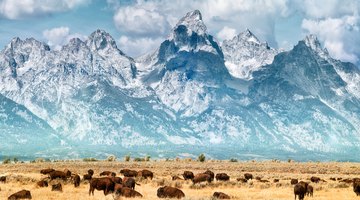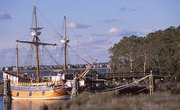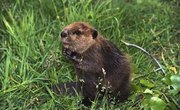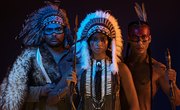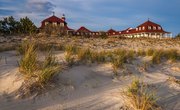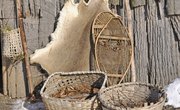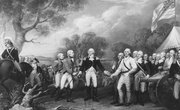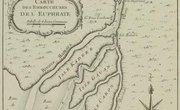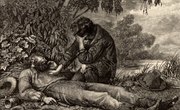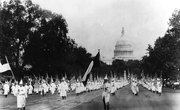Historians estimate that there were perhaps 30 to 60 million American bison, also known as the American buffalo, roaming the American plains in the mid-19th century. By the 1880s, a few hundred wild bison living in Yellowstone Park were among the last that remained. While exact numbers remain elusive, at least tens of millions of bison were certainly exterminated by hunters during the course of America’s westward expansion in the 19th century.
An Extraordinary Food Supply
Bison were the perfect food supply for the American Indians, providing them with almost everything they needed. Bison weigh up to 2,000 pounds, could be almost a dozen feet in length, stand up to six feet tall and live for 25 years. Their humps provided protein-rich meat; their hides, horns, hooves and sinews gave Indians clothing, drinking vessels, rope and bowstrings. Before Europeans came to America, there was little threat to the bison population from Native Americans -- without horses or firearms, Indians had to hunt on foot with spears or bows and arrows or stampede bison over cliffs.
Increased Slaughter
The killing of bison increased when Indians acquired horses and guns from Europeans, but it was not until the arrival of white settlers that the slaughter truly began. The Western artist George Catlin estimated in 1841 that two to three million bison had been slaughtered for their hides -- sent to Eastern markets -- in the first 30 years of the 19th century alone. The bison was ruthlessly hunted by hunters, or "runners," as they called themselves, who were interested only in the valuable hides and who left the meat to rot on the plains.
Death on the Rails
The coming of the Transcontinental Railroad, which linked the country in 1869, also helped sound the death knell of the bison population. The railroads began to advertise what they called "hunting by rail." Parties of hunters using .50 caliber rifles headed west by rail to shoot bison from the roofs or windows of trains, in these cases not even bothering to take the hides. Killing bison in these numbers had the added effect of robbing Native Americans of their food supply, in effect starving them into submission, and soon military commanders were ordering their troops to kill buffalo wherever they could.
Bison Rebound
By 1902, only 23 wild bison existed in Yellowstone National Park. But in 1905, zoologist William Hornaday formed the American Bison Society with the intention of creating more wild herds. Today, there are roughly two dozen wild bison herds in the United States. The bison in Yellowstone, divided into two herds, are 3,000 animals strong. About 150,000 to 200,000 bison are also raised on ranches for meat.
Related Articles
References
Resources
Writer Bio
Based in New Jersey, Joseph Cummins has been a freelance writer since 2002. He has written 17 books covering history, politics and culture. He has a Master of Fine Arts in writing from Columbia University. His work has been featured in "The New York Times" Freakonomics blog, "Politico," "New York Archives" magazine, "The Carolina Quarterly," "The Michigan Quarterly" and elsewhere.

